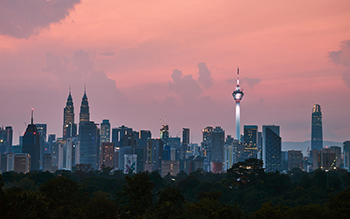
Johor Gov't Identifies 77 Congestion Hotspots In Greater JB
ISKANDAR PUTERI, Nov 25 (Bernama) -- The Special Traffic Dispersal Committee has identified 77 congestion hotspots in the Greater Johor Bahru (JB) area, the Johor State Assembly was told today.
State Public Works, Transportation, Infrastructure and Communications Committee chairman, Mohamad Fazli Mohammad Salleh said that short-, medium-, and long-term solutions are being implemented to address congestion issues in the identified areas.
He said that these measures are necessary to ensure that operation of the Rapid Transit System (RTS) station will not only have economic, social, and technological impacts but also help resolve congestion in Greater JB.
"For short-term solutions, traffic management has been carried out in several areas, such as assistance from traffic police for controls, road openings and closures, and the use of flexible posts to prevent vehicles from queue-cutting at intersections," he said.
He was replying to a question from Marina Ibrahim (DAP-Skudai) regarding the state government’s assurance to ensure traffic around Johor Bahru city and the Greater JB area will not be burdened by the RTS project.
Meanwhile, Mohamad Fazli said several projects involving road widening and upgrades, with a total allocation of over RM1.28 billion, are expected to be completed in 2026 and 2027, in time for the RTS to become operational and that these projects are anticipated to help alleviate traffic congestion in Greater JB and surrounding areas.
"Among them is the upgrading and construction of a new road in Gelang Patah (J4) from the Gelang Patah CIQ intersection to the four-way traffic light intersection at Tanjung Pelepas (costing RM62.5 million, started in 2020, expected to be completed in 2026).
"Other projects include upgrading Phase 2B of the Pasir Gudang Highway (FT17) and the intersection from Bandar Seri Alam/Taman Rinting to Pasir Gudang (costing RM78 million, started in 2023, expected to be completed in 2026) and the elevated intersection project from EDL–Johor Bahru City Centre–Stulang Laut (costing RM371.7 million, started this year, expected to be completed in 2028)," he said.
Mohamad Fazli also highlighted the upgrading of the Senai-Desaru Expressway (SDE) from a two-lane two-way to a four-lane two-way highway over a stretch of 9.4 kilometres, costing RM160 million (started this year, expected to be completed in 2026), and the construction of a directional ramp at the SDE-Bandar Penawar intersection, costing RM86.6 million (started in 2022, expected to be completed in 2026).
For medium- and long-term measures, he said several large-scale projects and initiatives are also planned, including the development of public transport corridors, such as the Northern Corridor (KTM–Komuter), Northern Corridor (Skudai), Western Corridor (Iskandar), Eastern Corridor (Tebrau), and East-West Corridor (KTM).
"In addition to public transport corridor development, projects involving infrastructure such as the construction of new intersections, new roads, and road widening, including the expansion of the North-South Expressway and SDE, have been scheduled based on the current development projections of the state," he said.
Meanwhile, Mohamad Fazli said that the RTS, which is expected to be completed in 2026 and operational by 2027, will help reduce the number of vehicles on the Johor Causeway, which often experiences severe congestion.
"With faster transportation routes, we expect 20 per cent users who previously used private vehicles may switch to the RTS.
"The RTS, which connects Johor Bahru to Singapore, is expected to bring significant benefits to residents, workers, and visitors crossing between the two countries," he said.
-- BERNAMA














